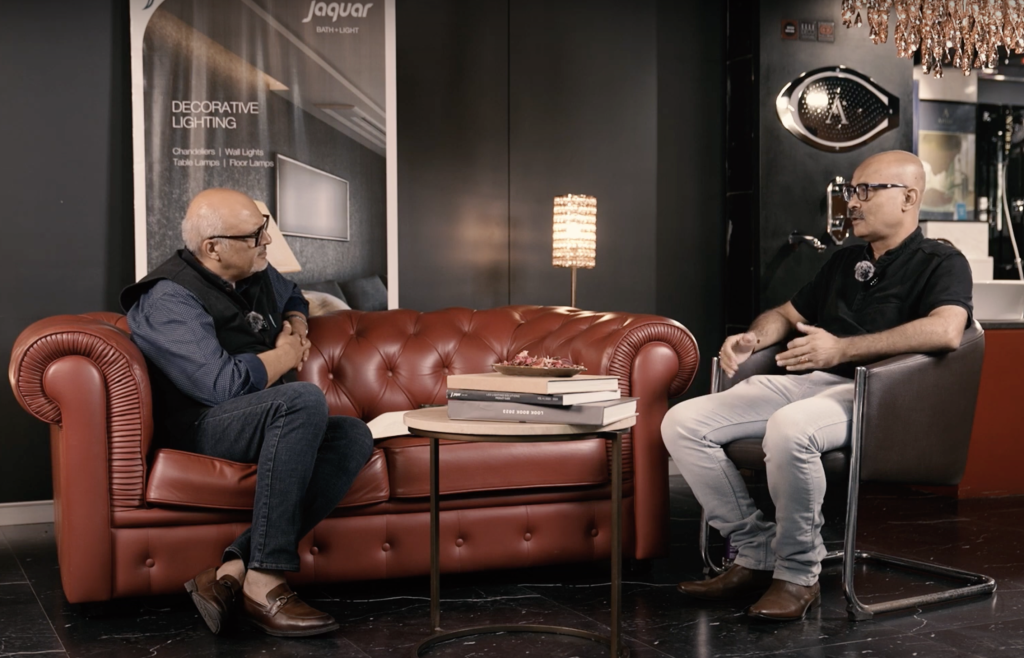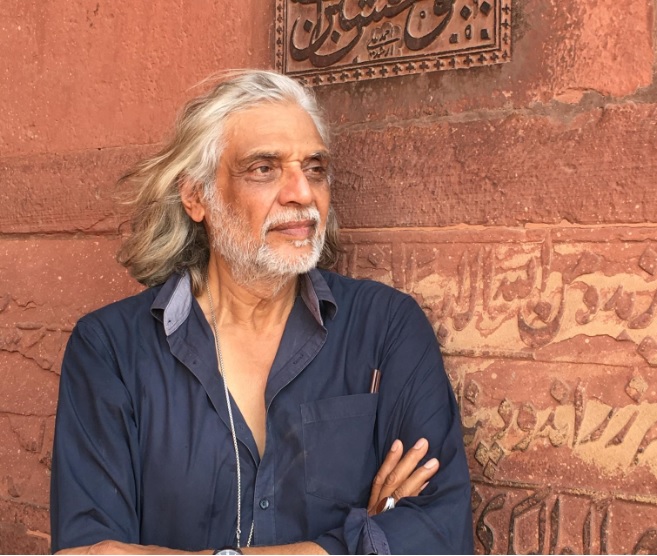Welcome to Samvaad, where art meets conversation, and inspiration knows no bounds. Here we engage in insightful conversations with eminent personalities from the art fraternity. Through Samvaad, Abir Pothi aims to create a platform for thought-provoking discussions, providing readers with an exclusive glimpse into the creative processes, inspirations, and experiences of these creative individuals. From curating groundbreaking exhibitions to pushing the boundaries of artistic expression, our interviews shed light on the diverse perspectives and contributions of these art luminaries. Samvaad is your ticket to connecting with the visionaries who breathe life into the art world, offering unique insights and behind-the-scenes glimpses into their fascinating journeys.
People like Mr. Pinaki Bhattacharjee serve as guiding lights in the dynamic field of architecture, where creativity and functionality, tradition and contemporary, meet. Mr. Bhattacharjee has over twenty years of experience influencing Guwahati’s architectural scene. He is a source of knowledge on the complex interplay among urban growth, cultural legacy, and environmental sustainability. Mr. Nidheesh Tyagi from Abir Pothi will be joining us in this insightful debate. His deep interest in the nexus between art and architecture brings a special viewpoint to our discourse. We explore Mr. Bhattacharya’s insights, viewpoints, and insightful observations on the history, current state, and future of architecture in the area together. Mr. Bhattacharjee’s words offer priceless lessons for aspiring architects, artists, and fans alike, covering everything from the union of history and innovation to the challenges of urbanisation and the requirement of ecological balance. Come along with us as we take a tour of Guwahati’s architectural landscape led by one of its most renowned practitioners, Mr Pinaki Bhattacharjee.
Nidheesh: How, because of this whole pressure and the scarcity of space, especially in these towns, and that’s leading to new kinds of structures, what happens to the public spaces? I mean, you know, because this was again, I mean, 30 years back, it would have been a very different kind of city with lots of open grounds and places, also its own iconic kind of vibe.
PB: Guwahati has a major problem with public spaces, sadly.
Nidheesh: It always had it or like it’s happening now?
PB: See, earlier, the growth of the city in the last 20-25 years, so before 25 years, we never used to think that we would ever reach a position wherein we would run out of public spaces. Now, it’s the reality. We truly do not have proper utilisable public spaces in the form of parks, or playgrounds. Every neighbourhood should have one; we don’t have one. There’s a law which is being recently introduced whereby the government is trying to take even a very small plot that I possess, which I will not be able to utilize in the best possible manner. I shall have the possibility; there is a possibility I can hand it over to the government whereby the FSI (Floor Space Index) or the FAR (Floor Aspect Ratio) that is granted for that lot of land will be given in the form of a certificate which I can put elsewhere within the same master plan area. Even if in the case of those processes, we, the government, get back small pockets of land, some of the utility things can be posted there. This is very important right now. Even if in case you move into some of the roads of Guwahati, you will see dustbins are put on the roads themselves; there are no special provisions for big dustbins. So now, these pockets of land, if made available to the government, the government can shift the transformers, the dustbins; they can be shifted in those small properties. I think people will also voluntarily come up and give these small plots of land which they are unable to utilize properly. I think people will do that.
Nidheesh: Mr. Bhattacharya, you were talking about your interest in temples, which was quite evident, and you have a very strong connection, you were telling me, with Kamakhya. So, can you run us through this whole perspective? How do you see temples? We’re talking about how temples used to be there and how the land would be picked up and how they would be made. I always wonder because I come from Madhya Pradesh, and from right from Khajuraho to Konark, there’s a very different kind of architecture happening in temples over, I think, over 7-8 centuries. So, there’s uniformity without being monotonous and then having the same kind of motive structures. So yeah, I mean, I would want to hear from you about what you think about temples.
PB: See, this is purely my understanding from what I have read and analysed. I feel that the temples, the older temples, the traditionally known temples, whether you call it in the South like Tirupathi and Rameshwaram temples or in the North, whichever important temples we have, many of the temples in North India were destroyed like Kashi Vishvanath or Somnath Temple, anything you talk about. So, I mean, what happens is that I felt that the temples were not constructed on any given plot of land. They were very selected; they were selected by experts because I feel that at every point, the Earth releases some energy. Maybe some energies are good, some are bad, wherein the release of energy is high, positive energy. Most of these temples, these olden temples, were constructed in those areas. Why do I say so? If in case you analyse a temple, the olden temple structures, the old ones which were not destroyed, which still stand, you’ll find, even in Kamakhya, you go, the main Sanctum Sanctorum, there will be a Nath Mandir, we call it, which is before the main temple wherein the deity is put. So, in that portion, you will have lots of penetration and lots of openings; you can come in, and go out through multiple doors and windows. Why suddenly do the architects of that time feel that wherein the sanctum sanctorum is, there should be only one single opening? Have you noticed with all the older temples where the main deity sits, there’s only one single opening, and often the opening size is much smaller than you literally have to bend down to enter into that? It’s because that is where the release of energy is maximum. It is what they felt that we should be able to trap that energy to the maximum extent possible, and that can be done when you have less number of openings. But without a single opening, nobody will be able to come in. So, even in some of the South Indian temples, still, it’s still a practice that a male who walks into the temple walks almost bare-chested so that your body is able to absorb the maximum energy possible. So, it’s a storehouse of energy, and therefore, a visit to a temple, I feel, is important.
Maybe many of the philosophies or theories run this way, “God is there everywhere; why should I go to a temple? It can be there at my home.” Yes, it’s there, but for people like us who don’t have the capacity to energize themselves, better go to a temple, a such temple wherein you get some good, positive energy in your body. You actually feel the vibe when you go to such a temple. Yeah, this is, I feel, my understanding. So, the importance of temples and their location, not any ordinary person today, if in case you ask an architect or a super-specialist architect to choose a site wherein a temple has the maximum real, you’ll naturally take the help of some machines and equipment. They either had that equipment then which we don’t know or they could make certain calculations wherein they could derive such a location. So, this is my understanding. There are a lot of things apart from that which I feel about a temple, the importance of the temple and the visit of the temple.
Nidheesh: So about the design of the temple? We are actually getting into a kind of time where we are going to have one of the biggest temples being made in this country right now, and then we have a huge rich history of temples and their architecture.
PB: Yeah, very true. The location of the temple is the same as the original one, so I don’t have any doubts about the release of energy and the energy point of that space. But about the design and the principles, I think they must have had such intelligent people to cover those areas also. It has also been designed on the same principles.
To be continued…..






